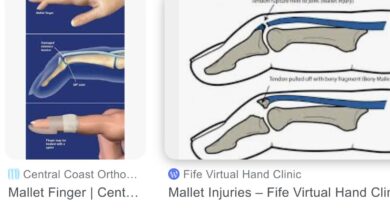LOW BACK PAIN: Why is it so common?

Low back pain. Three words we hear spoken all the time. Three words that affect lives profoundly—attendance and performance at work, family social activities, work around the house and yard, anything that requires bending, lifting, turning, and twisting. LIFE is interrupted by low back pain.
Eighty percent of the population experiences low back pain during their lives. At any one time, an estimated 25% of adults have had low back pain during the past three months. It is a leading cause of missed time at work, right behind respiratory illnesses, and is the most common cause of job-related disability. Both men and women are equally affected by low back pain, and in most cases, it resolves on its own within days or weeks.
The lower spine (back) is comprised of five Lumbar Vertebrae (bones) held together by Ligaments that run up and down the vertebrae and form a column. In between each of the vertebrae are rubbery pads called intervertebral discs which cushion the bones and function as shock absorbers for the spine? On either side of the spine are large Muscles that enable the spine to bend and twist. Running up and down in a canal within the bony spine are the Spinal Nerves. There are 5 nerves on each side of the spine designated as L1, L2, L3, L4, and L5. The spinal cord itself actually ends in the lower thoracic section of the spine, but the Lumbar Nerves extend down the spinal canal from the cord and exit at the spinal level for which they are named. These Nerve Roots, as they are called, continue through the buttocks into the lower extremity and end at the muscle group they cause to move.
Low Back Pain (LBP) can originate from problems that occur in any of these structures.
Low back pain (LBP) can be acute or chronic and is categorized into two major groups.
1. Mechanical Low Back Pain
2. Low Back Pain Caused by an Underlying Disease State
By far, the more common group is mechanical LBP. These are the folks who hurt their back lifting, bending, twisting, leaning, or doing any physical activity the puts undue stress on the low back and disrupts the way the components of the back (spine, muscles, ligaments, discs, and nerves) function together.
Causes of Mechanical Low Back Pain:
1. Sprains and Strains—most frequent cause, bending, twisting, lifting, overstretching
2. Disc Degeneration—the cushions between vertebrae age, degenerate, and collapse
3. Herniated/Ruptured Disc—discs rupture and compress nerves exiting from the spine
4. Sciatica/Radiculopathy—spinal nerves are injured, compressed, or inflamed
5. Spondylolisthesis—one vertebra slips forward on the one below it stretching the nerves
6. Spinal Stenosis—arthritic or degenerative narrowing of spinal canal compressing nerves
7. Skeletal Abnormalities—curvature of the spine (scoliosis, lordosis)
On the other hand, LBP from an underlying cause, are those patients with arthritis, inflammatory diseases, osteoporosis, infections, tumors, intra-abdominal disorders like aortic aneurysms, endometriosis, fibromyalgia, etc.
Underlying Conditions Causing Low Back Pain:
1. Infections—osteomyelitis, discitis, sacroiliitis
2. Tumors-Benign/Malignant—bone destruction by malignancy, or external spinal pressure
3. Kidney Stones—can cause LBP
4. Inflammatory Joint Disease—rheumatoid arthritis, osteoarthritis, auto-immune
spondylitis (ankylosing spondylitis)
5. Osteoporosis—bone density loss leads to spinal fractures
6. Endometriosis—uterine tissue located outside of the uterus causes pain
7. Abdominal Aortic Aneurysm—the aorta sits right in front of the spine, enlargement puts pressure on the spine
8. Fibromyalgia—a chronic pain syndrome involving multiple muscles and joints
Several factors are involved in causing LBP. Age, weight/obesity, sedentary lifestyle, fitness level, pregnancy, genetics, and occupational risks all factor into the development of LBP. Most LBP episodes occur in overweight people in their 30’s to ’50s who are not physically fit. Add to that an acute physical insult such as lifting a suitcase out of the trunk of the car or bending over to pick up a toddler, acute LBP is very likely to occur.
Diagnosing LBP is fairly straightforward. History and physical examination usually give the doctor the information needed to make the diagnosis. Unless there are signs, symptoms, or findings indicating a more serious problem, other studies, such as x-rays, CT, MRI, etc., are not necessary and are reserved for cases that don’t resolve quickly or show indications of nerve injury or other major underlying cause.
Opinion: If you go to the doctor with low back pain and you are not thoroughly examined you have been mistreated. The doctor should have you undress, stand in front of him/her so the area in pain can be seen, apply hand pressure to that area, have you bend forward, back, side-to-side, and twist, stand or your heels and toes, check your reflexes-knee and ankle, and have you sit on the exam table and extend your legs straight. If all of this is not done, an accurate diagnosis will never be made. Without examining a patient you can easily miss something more serious than acute low back strain.
Treatment of Low Back Pain consists of reducing inflammation, controlling pain, and rehabilitating weak, injured muscles and ligaments.
Acute Low Back Pain:
1. Analgesics—pain relief with acetaminophen and short-term opioids
2. Anti-inflammatory drugs—NSAID’s like ibuprofen, naproxen reduce inflammation/pain
3. Heat, Ice Applications
4. Bed Rest/Limited Activity—only if moving aggravates the pain
5. Strengthening Exercises—improving flexibility, mobility eases pain
6. Physical Therapy—supervised program of exercise,special treatments to improve pain
Opinion: The majority of cases of LBP will resolve quickly with the above treatment measures. However, if pain and limited motion persist or there are signs and symptoms of nerve compression, many other treatments are available.
In addition to analgesics, anti-inflammatories, local treatment, and physical therapy, special treatments are often used. These are:
Pelvic Traction—rarely used now because of limited benefit
Acupuncture—only used in certain situations, it has more benefit for chronic LBP
Biofeedback—used in combination with other treatments for acute pain. Electrodes are attached to the skin for the patient to become aware of techniques they can use to“self-regulate” acute pain. Breathing, relaxation, muscle tension are assessed and used for relieving acute pain.
Nerve Blocks—specific nerve roots that are identified as the source of pain are injected with anesthetics or cortisone
TENS (Transcutaneous Electrical Nerve Stimulation)—an electric current is run between electrodes attached to the skin on either side of the pain site. This stimulates the production of pain-relieving body chemicals which lessen pain.
Epidural Steroid Injection (ESI)—for acute sciatica. Cortisone is injected into the space inside the spinal canal at the nerve root level where the pain is occurring.
Spinal Manipulation—chiropractic therapy maneuvers of limited benefit.
Surgery—numerous techniques are used. Most frequently performed are:
A. Laminectomy—for spinal stenosis. The spinal column is opened and nerve pressure is
relieved
B. Microdiscectomy—a herniated disc is removed relieving pressure on spinal nerves
C. Foraminotomy—enlargement of the opening where a nerve root exits the spinal canal
D. Vertebroplasty/Kyphoplasty—for vertebral fractures caused by osteoporosis. Bone
cement is injected into the vertebral body to stabilize and strengthen the bone to
prevent further collapse
E. Spinal Fusion—for spondylolisthesis. Bone grafts or metal plates/bars fuse two
vertebrae together to prevent further slippage and nerve damage and relieve pain.
The best treatment, however, is prevention.
Exercise
Sit up straight—don’t slouch
Sit in a chair with lumbar support
Work surfaces should be at a comfortable height
Wear comfortable flat-heel shoes
Sleep on your side in the fetal position—knees bent up to your chest
Proper nutrition
Stop smoking—it impedes healing.
Dr. G’s Opinion: I have been troubled by low back pain for years. I’ve had sciatica and it’s no fun. Use whatever preventive measures available to you, lift, bend, and twist very cautiously, and exercise regularly. I only wish I had practiced what I preached.
References: https://www.ninds.nih.gov/Disorders/low-back-pain-fact-sheet




